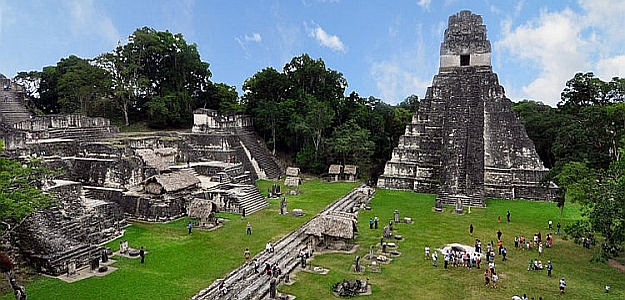
Kuil, L., Carr, G., Viglione, A., Prskawetz, A., and Blöschl, G. (2016) Conceptualizing socio-hydrological drought processes: The case of the Maya collapse. Water Resource Research, 52(8), 6222-6242.
Contact
Linda Kuil
Doctoral Programme on Water Resource Systems
Tel.: +43-1-58801-406667
kuil@waterresources.at
Karlsplatz 13/222, A-1040 Vienna, Austria
Research Highlights
Modelling the impact of drought on the ancient Maya
What was the role of rainfall in the demise of the ancient Maya civilisation? Mathematical models that link water and society can help us understand the past - and give insight into our own future.

The ancient Maya were a flourishing advanced society, but their population peaked around AD800 and then rapidly decreased. Large and well established cities were abandoned. There remains much debate about what caused this population collapse. Climate change that led to drought could be one reason. To explore this theory, Linda Kuil developed a mathematical model that couples rainfall, construction of water reservoirs, food availability and population. Mathematical interrelationships between food availability, birth rate, awareness to water scarcity and the capacity to build storage reservoirs were established. The model simulations, using estimates of rainfall data from the ancient Maya period, show how the reservoirs that the Maya built to cope with water scarcity, enabled them to overcome short droughts, grow large quantities of food and increase the size of their population. But, when a major drought occurred around AD830, their water engineering systems were insufficient to meet the large water demands of their extensive population. The resulting water and food scarcity would have led to a rapid depopulation.
Reservoirs increase vulnerability when there's a major drought
The model has the ability to explore different scenarios in the past, which has major implications for thinking about how we manage our water today. For example, if the Maya had not built reservoirs, the model suggests that the population would never have grown so large, and collapsed so severely. Instead, each drought would have resulted in a small population decline. By engineering their environment, the Maya were able to successfully overcome small droughts, but became extremely vulnerable to large droughts. While we may never fully know the reasons for the Maya collapse, the model provides one plausible explanation. The message on vulnerability that emerges is also extremely relevant for many societies around the world where engineered environments are critical for food and water security. As shown by the Maya, climate change may test them to their limits.
August 2017
